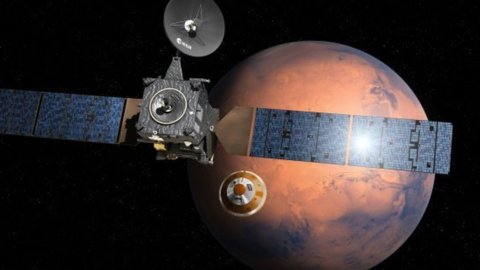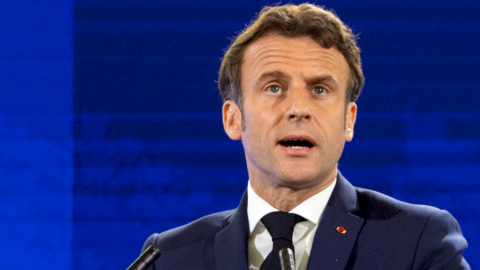The Schiaparelli probe has landed on Mars: the confirmation signal from the Exomars instruments in orbit around the Red Planet has officially arrived in the late Italian afternoon. In Germany and the rest of Europe there were minutes of apprehension about the outcome of the mission, but in the end the thumb was raised: Italy has finally landed on the red planet.
The GMRT radio telescope (Giant Metrewave Radio Telescope), located in India, first detected the signal of the Eso spacecraft's approach. The instrument had followed the European probe throughout the delicate phase of approaching the Martian ground to then leave the baton to Tgo (Trace Gas Orbiter), the mother spacecraft from which Schiaparelli had separated.
Among the first to comment on the mission Prime Minister Matteo Renzi, traveling to the USA who did not want to miss the appointment of the space history of our country. “The Schiaparelli probe – he said during his speech at Johns Hopkins University -, was the first European mission to arrive on Mars, before the US starts organizing tourist trips for us. The ESA mission is now led by Italy – he continued, emphasizing the Italian excellences -. The United Kingdom, Germany and France contribute about as much together as Italy alone. However, Europe – added Renzi – also goes to the suburbs and not only to Mars”.
Schiaparelli transported to the red planet a science package that will record wind speed, humidity, pressure and temperature at the landing site, and will also get the first measurements of electric fields on the surface of Mars that could provide a clue to how dust storms are triggered. And consequently how it might be addressed by Earth pioneers and their equipment.
Through the subsidiary Thales Alenia Space, Italian aerospace giant Leonardo has leadership of both 2016 and 2020 ExoMars missions. Many of the high-tech products used in the program were made by Leonardo: the stellar attitude sensors, the photovoltaic panels, the focal plane and the processing electronics of the Cassis stereo camera, the electronic power units and the very sophisticated drill that will start in 2020 to dig the Martian soil with its spearhead for the first time in history up to a depth of 2 meters in search of traces of life.





